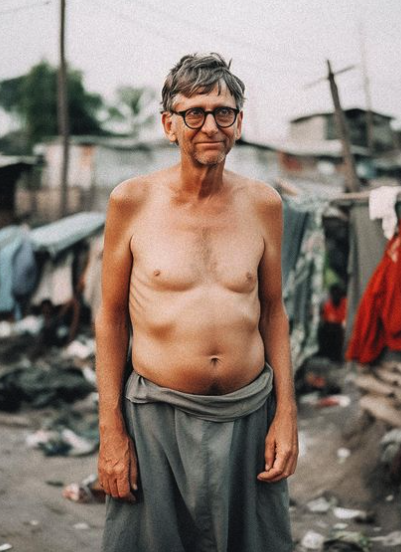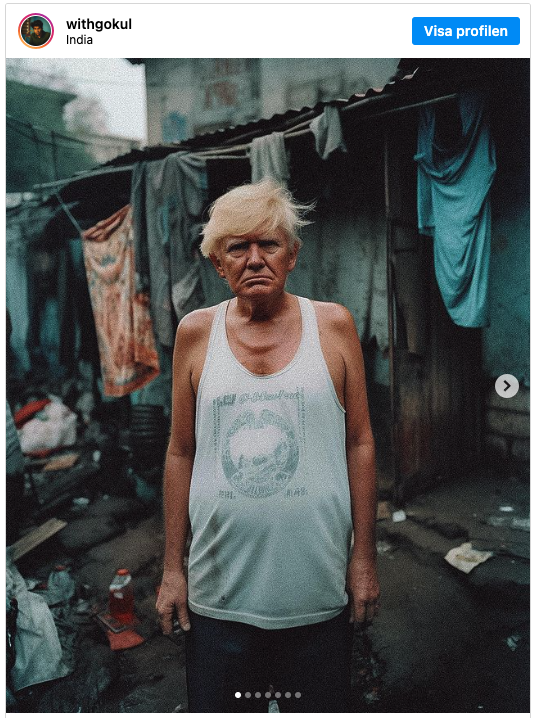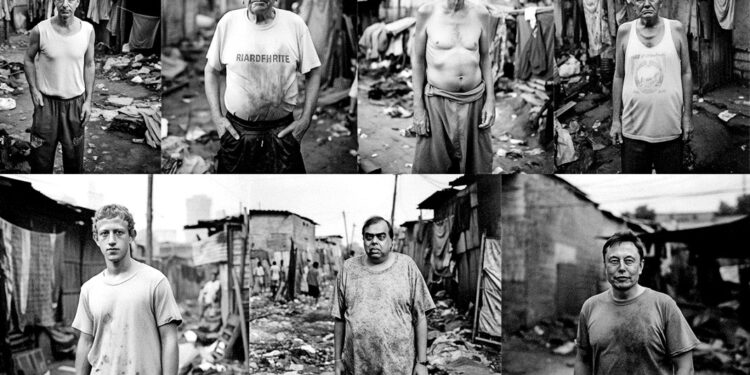The world of art has been shaken up by a new series of AI-generated portraits by Gokul Pillai. The portraits depict billionaires such as Elon Musk, Bill Gates, Bernard Arnault, Warren Buffett, Mark Zuckerberg, and Mukesh Ambani living in poverty-stricken slums, prompting reflection on the ethics of AI art and the power dynamics associated with extreme wealth.
The portrayal of billionaires in poverty using AI-generated images
Pillai’s use of the AI program Midjourney has resulted in hyperrealistic images that show the billionaires dressed in rags, with downtrodden body language, against the backdrop of destitute surroundings. Since sharing the series on Instagram on April 8, the portraits have garnered thousands of likes and comments, igniting discussions about wealth inequality and societal disparities.

While some may argue that the use of AI in art is questionable, Pillai’s portraits are a powerful reminder of the ability of art to provoke thought and spark conversation. The portraits have caused viewers to question their perceptions of wealth and poverty, and to reflect on the stark contrast between the imagined poverty of the billionaires and their real-world wealth.
The use of AI in art raises important ethical questions. Is it ethical to use AI to generate images that challenge our perceptions of the world around us? Is it ethical to use AI to create hyperrealistic images that blur the lines between reality and fiction? These questions are not easy to answer, but they are important to consider as we continue to explore the intersection of art and technology.
AI artist Gokul Pillai’s thought-provoking portrait series
Gokul Pillai’s series has also highlighted the unique portrayal of each billionaire. For example, Elon Musk still looks rich even when he is portrayed as poor, highlighting the power dynamics associated with extreme wealth. This portrayal challenges viewers to consider the impact of wealth on our perceptions of ourselves and others.

In addition to raising ethical questions, Gokul Pillai’s series has also ignited discussions about wealth inequality. The stark contrast between the imagined poverty of the billionaires and their real-world wealth has prompted viewers to consider the impact of wealth on society as a whole. This discussion is particularly relevant given the current economic climate, where the gap between the rich and poor is widening.
Despite the important discussions that Gokul Pillai’s series has sparked, some may argue that the use of AI in art is questionable. Critics of AI art argue that it is not truly creative, as the artist is not directly involved in the creation process. However, this argument overlooks the fact that the artist is still responsible for the creative direction of the work, and that AI is simply a tool that can be used to bring their vision to life.
Furthermore, AI art has the potential to democratize the art world by allowing artists to create works of art that are accessible to a wider audience. This is particularly important given the high cost of traditional art forms such as painting and sculpture.
Gokul Pillai’s series of AI-generated portraits has sparked important discussions about the ethics of AI in art, as well as the impact of wealth on society as a whole. While some may argue that the use of AI in art is questionable, the series is a powerful reminder of the ability of art to provoke thought and spark conversation. As we continue to explore the intersection of art and technology, it is important to consider the ethical implications of our actions and to use technology in a way that benefits society as a whole.
Source: MEGA NEWS



Recent Comments